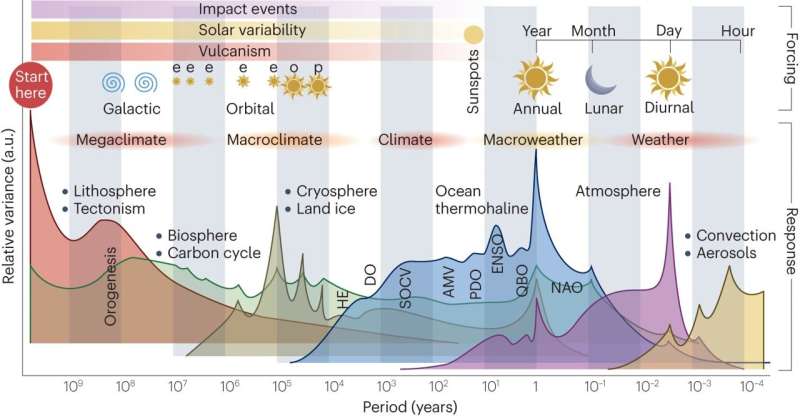This article has been reviewed according to Science X's editorial process and policies. Editors have highlighted the following attributes while ensuring the content's credibility:
fact-checked
peer-reviewed publication
trusted source
proofread
Climate tipping points easier to judge with math breakthrough

Math experts have developed new ways to provide further evidence for human-caused global heating and predict how close Earth is to reaching dangerous climate tipping points.
Tipping points occur when lots of small changes in climate build up to create a sudden, large change. Passing these thresholds leads to accelerated warming and extreme weather events.
For example, in years to come, the Atlantic Meridional Overturning Circulation (AMOC), is at risk of collapsing. The AMOC is an ocean current transport system that brings warm water to the North Atlantic and helps to regulate temperatures in Europe and North America. If it collapses, the regional and global climate may become more erratic.
In July 2023, a study suggested the AMOC could collapse any time between 2025 and 2095. Another recent study, from October 2023, indicates that we are in dangerous proximity of the collapse of the Greenland ice sheet, yet with some hope of avoiding it if proper action is taken.
Now, a study published in the journal Nature Reviews Physics combines mathematics and physics to study climate change across time scales. It will help scientists refine their predictions for AMOC's collapse as well as help them understand the proximity to various other climate tipping points.
Lead author Professor Valerio Lucarini, Professor of Statistical Mechanics at the University of Reading, said, "Our study provides academics and policymakers with rigorous mathematical tools needed to understand and predict climate change, and, specifically to detect and avoid climate tipping points resulting from human activities. It gives us a unified perspective linking climate variability and climate change. Our approach allows one to seamlessly study gradual climate changes and tipping points.
"We now have a robust framework for capturing the richness of climate dynamics across timescales. The findings provide tools for building up further evidence for human-caused global heating."
Innovations and collaborations
The work will significantly advance the development of climate models and theories to generate more accurate predictions of climate change and evaluation of tipping point proximity, helping to inform mitigation policies and climate adaptation strategies.
The research critically investigated 2021 Nobel Prize in Physics winner Klaus Hasselmann's stochastic modeling approach, which revolutionized climate change analysis. The new study refined Hasselmann's techniques using recent tools developed within the mathematical and physical scientific literature.
The scientists noted how their methodology allows to better understand the nearing of the collapse of the AMOC. Observations show the AMOC is weakening. In addition to AMOC, the new method could be used to detect proximity to tipping points for:
- The collapse of ecosystems
- The melting of Greenland ice sheets
- The dieback of the Amazon rainforest
More information: Valerio Lucarini et al, Theoretical tools for understanding the climate crisis from Hasselmann's programme and beyond, Nature Reviews Physics (2023). DOI: 10.1038/s42254-023-00650-8
Journal information: Nature Reviews Physics
Provided by University of Reading





















